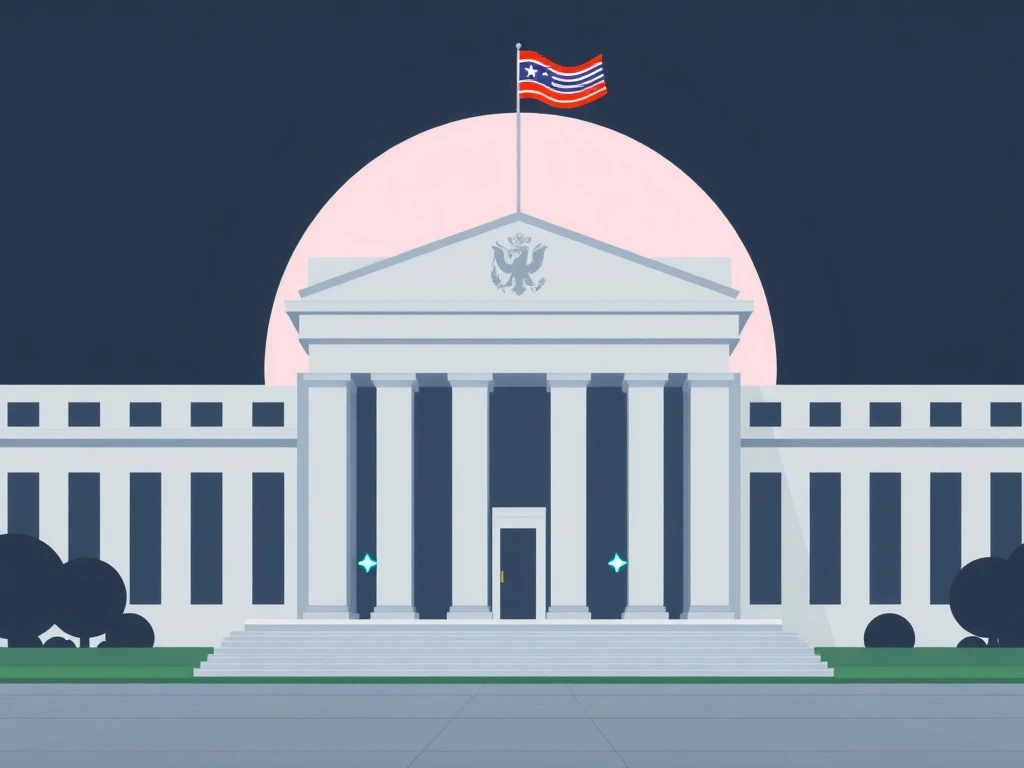Breakthrough: Fed Payment Accounts Could Revolutionize Crypto Banking Access

The financial world is abuzz. The US Federal Reserve is considering a pivotal change. This move could profoundly impact how fintech and crypto firms operate. Specifically, the Fed proposes new ‘payment accounts.’ These accounts aim to open up central bank payment systems. This development signals a potential end to long-standing crypto banking access challenges.
Fed Payment Accounts: A New Era for Fintech
Federal Reserve Governor Christopher J. Waller recently unveiled a significant proposal. He discussed the idea of ‘payment accounts’ during a Payments Innovation Conference. These accounts would grant direct access to the Fed’s payment services. Currently, only large banks utilize these through ‘master accounts.’ Waller stated, “I believe we can and should do more to support those actively transforming the payment system.” This statement underscores the Fed’s evolving perspective.
The proposed ‘skinny’ master accounts offer a streamlined approach. They would provide access to the Fed’s payment rails. Importantly, they would also “control for various risks to the Federal Reserve and the payment system,” Waller explained. This initiative, though experimental, signifies a growing integration effort. Fintech and crypto payment companies could soon join the traditional finance (TradFi) system. This represents a significant shift for the industry.
Ending the Era of Crypto Banking Access Challenges
For years, crypto firms faced significant hurdles. Many experienced debanking challenges. This era, sometimes called “Operation Chokepoint 2.0,” saw numerous tech and crypto founders denied banking access. Industry watchers now view the Fed’s proposal as a positive turning point. It addresses these historical difficulties directly.
Caitlin Long, CEO of Custodia Bank, voiced strong approval. She posted on X, “THANK YOU, Gov Waller, for realizing the terrible mistake the Fed made in blocking payments-only banks from Fed master accounts.” Long previously battled the Fed over master account access. She further noted, “Thank you for admitting that’s not true–it never was true!” This sentiment highlights the relief felt by many in the crypto community. The Fed’s re-evaluation could pave the way for a more inclusive financial system.
Fintech Integration: Bridging the Gap
The introduction of these payment accounts could accelerate fintech integration. Smaller companies could participate directly in the central bank’s payment system. This broadens the landscape beyond traditional large financial institutions. The Fed’s initiative demonstrates a proactive stance. It aims to support innovation within the payment sector. This approach could foster greater competition and efficiency. Consequently, consumers and businesses might benefit from enhanced payment services.
Moreover, direct access minimizes reliance on third-party banks. This reduces friction and costs for fintech firms. It also provides a clearer regulatory pathway. The “skinny” accounts aim to manage risks effectively. This ensures system stability while promoting innovation. Ultimately, this move could reshape the relationship between emerging tech and established finance.
Understanding Operation Chokepoint 2.0 and Its Legacy
The term “Operation Chokepoint 2.0” resonates deeply within the crypto industry. Critics, including venture capitalist Nic Carter, described it as a concerted government effort. It allegedly pressured banks to sever ties with cryptocurrency firms. The collapse of several crypto-friendly banks in 2023 fueled these allegations. These events created significant instability for many crypto businesses. They struggled to find banking partners.
This historical context makes the Fed’s current consideration even more impactful. It suggests a departure from past policies. The potential for direct access through Fed payment accounts could dismantle barriers. It may also restore trust between regulators and the crypto sector. This policy shift indicates a recognition of crypto’s growing legitimacy. It also acknowledges the need for fair access to financial infrastructure.
Embracing Blockchain Innovation for Future Payments
The Federal Reserve is not just reacting to current needs. It actively explores future payment technologies. Governor Waller confirmed the central bank’s engagement with cutting-edge solutions. He stated, “We are also looking ahead, conducting hands-on research on tokenization, smart contracts, and the intersection of AI and payments.” This research extends to potential uses within the Fed’s own payment systems.
This proactive approach highlights the Fed’s commitment to understanding technological advancements. It evaluates whether these innovations can upgrade existing payment infrastructures. The focus on blockchain innovation, AI, and smart contracts demonstrates a forward-thinking strategy. It suggests a future where these technologies play a more integral role in mainstream finance. This exploration ensures the US remains at the forefront of payment system evolution.
A New Horizon for Digital Finance
The Fed’s consideration of “skinny” payment accounts marks a significant moment. It could revolutionize crypto banking access. This initiative promises to integrate fintech more deeply into the financial system. It also signals a departure from the challenges of “Operation Chokepoint 2.0.” Furthermore, the Fed’s ongoing research into blockchain innovation and AI solidifies its commitment to future-proofing payment systems. This is a crucial step towards a more inclusive and technologically advanced financial landscape.







